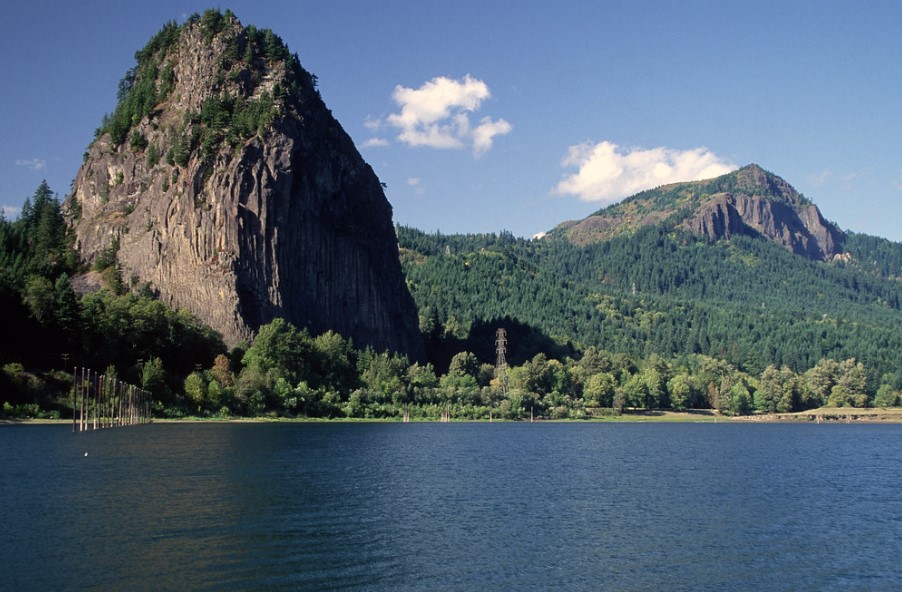Beacon Rock State Park is located in Skamania County, Washington, within the Columbia River Gorge National Scenic Area, as well as a geological preserve and a public recreation area. The Rock of Gibraltar, Stone Mountain, and Mount Augustus, all much larger than either of the first two, have been claimed as the second largest free-standing monolith in the northern hemisphere, if not the world.

On the north shore of the Columbia River, 51 kilometers east of Vancouver, it is named after Beacon Rock, an 848-foot basalt volcanic plug. The Lewis and Clark Expedition arrived here on October 31, 1805, and the first measurements on the river indicated that the expedition was approaching the ocean. On the north bank of the Columbia River, Beacon Rock stands 848 feet tall and is composed of basalt.
Originally known as Beaten Rock, Beacon Rock was named by Lewis and Clark in 1805. Beacon Rock was renamed Castle Rock in 1915 after being known as Castle Rock for a brief time. In 1915, a 41-switchback trail, handrails, and bridges were constructed by Henry J. Biddle over the course of three years after he purchased the rock for $1.
All directions can be seen from the top of the three-quarter mile trail, which was completed in April 1918. A quality rock climbing experience can be found at Beacon Rock, which is known for its challenging, technical nature.

There are 32 kilometers of hiking, mountain biking, and equestrian trails within the park’s 4,464 acres. Campgrounds and boating facilities are available in the park. Beacon Rock can be reached by trail. On the trail to the summit of Hamilton Mountain, with views of Bonneville Dam and points east, Hardy Falls and Rodney Falls (Pool of the Winds) are scenic highlights.

An additional 7.75-mile loop hike is available at Hamilton Mountain Saddle, located north of the summit. A jetty at the mouth of the Columbia required a substantial amount of rock, so the United States Army Corps of Engineers dug three caves on the south side of the rock.
Henry J. Biddle’s family attempted to establish a state park during this time. After Oregon offered to accept the gift, Washington changed its position. 1935 was the year the park was established. The Civilian Conservation Corps made several improvements to the site.

It’s really fun to hike, and it’s not difficult at all. There are better views on the way up than at the top. The hike up Beacon Rock was fun on a sunny day. Wear a hat and sunscreen while climbing the switchbacks to protect yourself from the sun. At the summit of Beacon Rock, you’ll find a sign congratulating you and a beautiful view of Bonneville Dam upriver. Take a moment to enjoy the view before heading back home.







